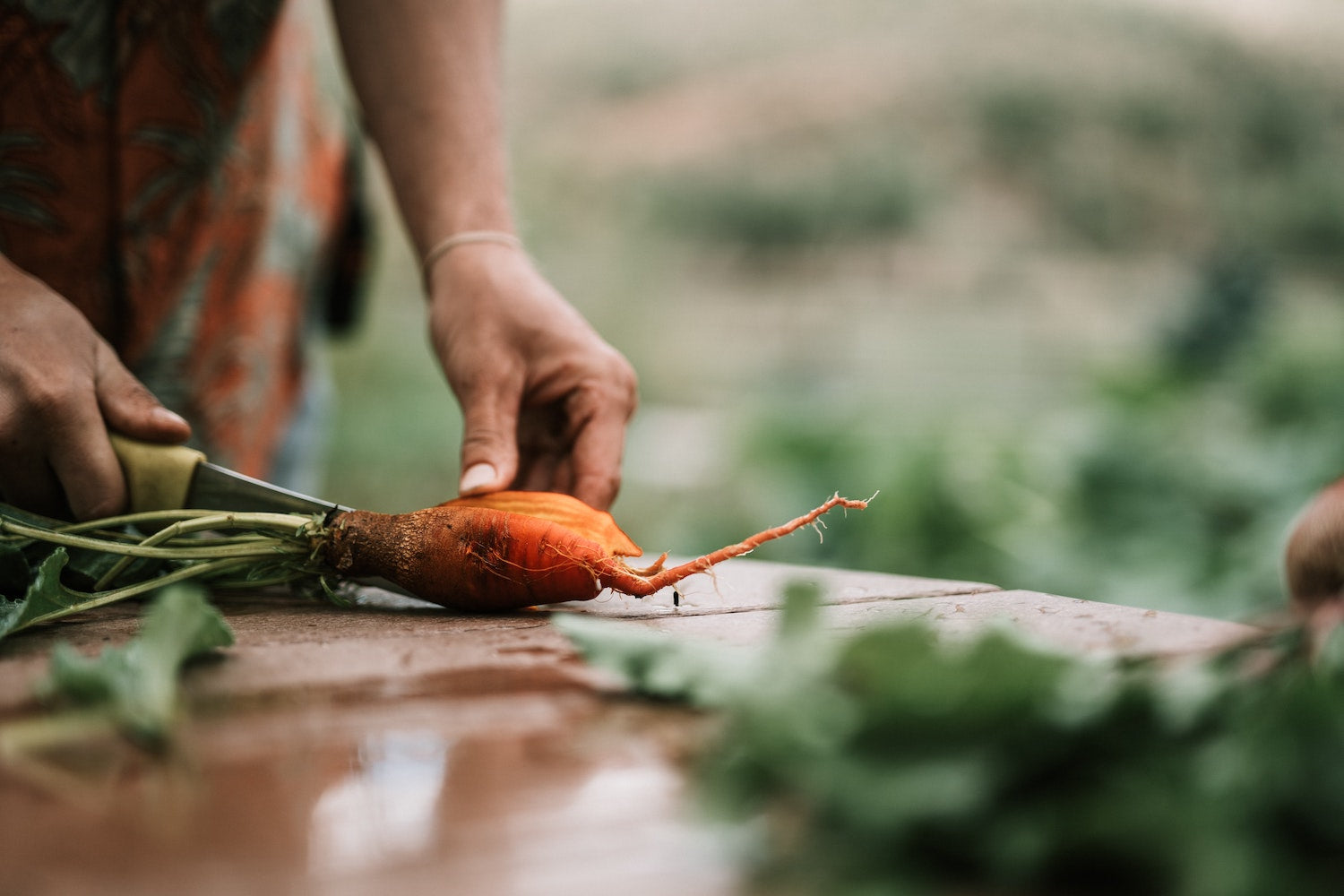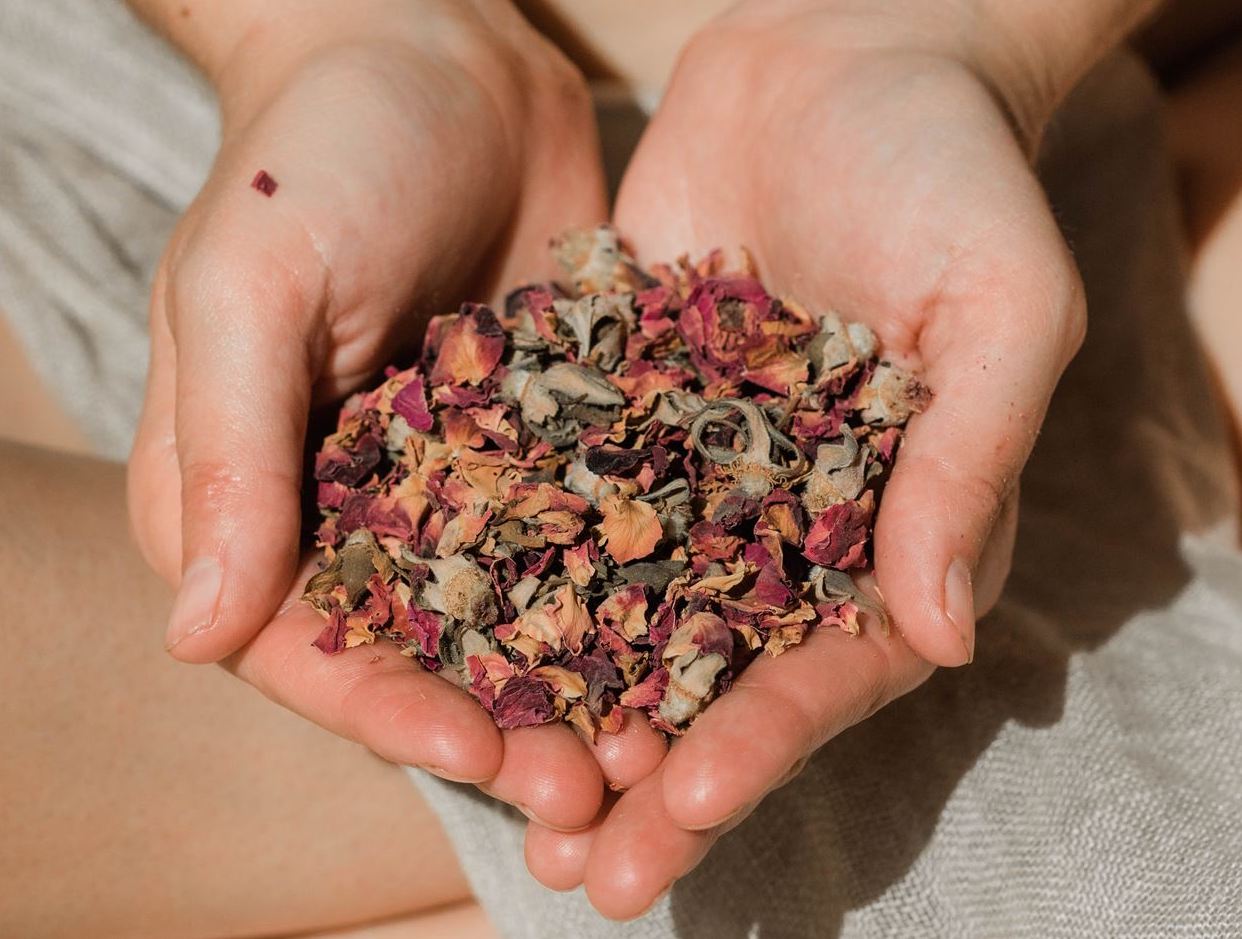
Pranayama for Balancing Vata Dosha
When the fall season arrives at our doorsteps, we can feel the transition from the hot months of summer into the cool and crisp days that lie ahead. Then, the slight chill to the air experienced in autumn becomes amplified as we reach early winter, where the temperatures outside can be downright frigid with snowstorms and sub-zero temperatures. From the Ayurvedic lens, the months of fall and early winter are considered vata season because the light, cold, dry and rough characteristics of the natural world are the same qualities contained within vata dosha.
In order to maintain equanimity and vitality during this time of year, Ayurveda generally recommends inviting in more heavy, warm, moist, stable and smooth properties through diet and lifestyle choices. This means that favoring vata balancing foods such as winter squash, root vegetables, ghee and digestive herbal remedies like our Vata Spice Blend can help to strengthen the body and its immune function during the sometimes harsh, cold days of fall and winter. To further bolster immunity and mental calm, Ayurveda also encourages incorporating vata pacifying yoga postures and pranayama (breathing exercises) into one’s daily wellness routine.
When is Vata Balancing Pranayama Indicated?
Ayurvedic medicine recommends practicing vata balancing pranayama during the fall and early winter if one is experiencing no current doshic imbalances. This way, you are keeping your self-care practices in alignment with nature as it flows from season to season. Vata balancing pranayama is also indicated if you are currently experiencing a vata imbalance. This can manifest itself with the following symptoms:
- Lack of focus
- Anxiety
- Overwhelm
- Difficulty falling asleep due to worry or fear
- Feeling cold
- The urge to snack on light, dry foods like crackers or popcorn
- Non-smelly gas
- Constipation
- Dry skin
- Dry, itchy scalp
- Cracked lips
- Fatigue
- Pain
To learn more about your dosha and if vata may be out of balance, take our Discover Your Dosha Quiz! Additionally, we encourage you to take your wellness journey to the next level by downloading our Introduction to Ayurveda Class or booking an Ayurvedic consultation with our Clinical Ayurvedic Specialist, Laurel Odom.
Ayurvedic Preparation for Pranayama
Before you begin your pranayama, Ayurveda recommends the rituals of neti and nasya in order to enhance the flow of prana and your ability to take in a full deep breath. Neti is the practice of cleansing the nasal passageways with a blend of warm, purified water and salt. Our PAAVANI Neti Salt blends Himalayan salt with essential oils of eucalyptus, peppermint, rosemary and tea tree, to provide you with an aromatic saline solution for your neti ritual. After you neti, remember to always follow with nasya. Nasya is the practice of applying herbal infused Nose Oil into the nasal passageways in order to further clear, hydrate and protect the nose from environmental pollutants and pathogens. Learn more about the benefits of neti and nasya in our blog, Neti & Nasya: Ayurvedic Practices for Optimal Wellness.
Nadi Shodhana
Nadi Shodhana, also known as Alternate Nostril Breathing, is a tridoshic pranayama, meaning that it balances all three doshas- vata, pitta and kapha. It also purifies and restores balance to both the Pingala and Ida Nadis, or subtle energy channels of the body. The Pingala Nadi is an energy channel within the subtle body that is connected with solar or sun energy. It is present on the right side of the body and left side of the brain. When your Pingala Nadi is activated during Nadi Shodhana, divine masculine energy is stimulated. The Ida Nadi is an energy channel within the subtle body connected with lunar or moon energy. It is present on the left side of the body and right side of the brain. When your Ida Nadi is activated during Nadi Shodhana, divine feminine energy is enhanced. In short, the practice of Nadi Shodhana helps to gently stimulate, cleanse and balance the male and female energies inherent within each of our bodies. It also balances both hemispheres of the brain and removes blockages to flow in the subtle energy channels.
Benefits of Nadi Shodhana for Vata Dosha
- Calms the mind
- Soothes the nervous system
- Brings in prana rich oxygen
- Eases pent up tension in the body
- Reduces anxiety and overwhelm
- Increases harmony
- Improves quality of sleep
- Cultivates a rhythmic, steady & grounding energy
How to Do Nadi Shodhana
- Find sukhasana or a comfortable seated position on the floor, preferably with your pelvis elevated by one or two folded blankets underneath your sitting bones. This method helps ensure your spine is straight and you are in proper alignment.
- Close your eyes and take 3 steady, deep breaths.
- Bring your left hand to chin mudra by placing your thumb and index finger together. Rest the back of your left palm on your left thigh.
- Bring your right hand to vishnu mudra by curling your index and middle fingers down into your right palm while your thumb, ring finger and pinky finger stay extended.
- Draw your right hand up to your right nostril, gently close your right nostril with your thumb.
- Slowly draw air into your left nostril for 3 seconds.
- Retain the breath by keeping your right nostril closed with your thumb and gently close the left nostril with your ring and pinky finger. Retain or hold the breath for 9 seconds.
- Keep your left nostril closed with your ring finger and release your thumb to slowly exhale out through the right nostril for 6 seconds.
- Keep your left nostril closed and slowly inhale through your right nostril for 3 seconds.
- Retain the breath by keeping your left nostril closed with your ring and pinky finger and gently close your right nostril with your thumb. Retain or hold the breath for 9 seconds.
- Keep your right nostril closed and release your ring and pinky finger to slowly exhale out through your left nostril for 6 seconds.
- This completes one full round of Nadi Shodhana.
- Repeat this process for 3-10 rounds.
- Remember to keep the breath fluid, smooth, relaxed and gentle.

How long should Nadi Shodhana take?
We recommend 3-10 rounds of this pranayama each day. A few rounds can take around 5 minutes, which will provide benefits to the body and mind; however, practicing for longer, up to 20 to 30 minutes per day, will enhance its benefits.
Contraindications for Nadi Shodhana
Nadi Shodhana is not recommended if you have recently undergone abdominal, brain or heart surgery. Also, if you are experiencing discomfort in the exercise, reduce the duration of the breath.
Bhramari
The term, Bhramari, is from the Sanskrit word bhramar which means ‘bumble bee’. Bhramari is a type of pranayama and it is also the name of a Hindu goddess, the goddess of the Indian black bees. Thus, it may come as no surprise to you that when you practice Bhramari, you make the steady, gentle buzzing sound that bees make when visiting flowers, drawing in their sweet nectar and pollen. The continuous, steady buzzing sound created with Bhramari is an excellent way to halt what Zen Buddhists call the ‘monkey mind’, which refers to the mind’s constant loop of chatter which can cause you to feel restless, confused and anxious. It is also a wonderful way to practice pratyahara or withdrawal of the senses.
Benefits of Bhramari for Vata Dosha
- Calms & quiets the mind
- Nourishes the nervous system
- Relieves stress & anxiousness
- Replenishes the bodily tissues
- Reduces blood pressure
- Improves quality of sleep
- Strengthens the throat & voice
- Releases cerebral tension
- Improves concentration & memory
- Relieves pain associated with headaches & migraines
- Contracts the bladder and can help eradicate constipation
How to Do Bhramari
Variation 1:
Variation 2:
Variation 3:

How long should Bhramari take?
We recommend practicing Bhramari 3-5 times each day. You can repeat the 6 rounds of Bhramari 3-5 times in one sitting to experience the immense benefits of this pranayama exercise. As a general rule of thumb, try to build up your bee or buzzing sound so one round lasts for 15 seconds.
Contraindications for Bhramari
Remember to not press too aggressively against your ear cartilage when plugging or closing off your ears. Also, you do not need to put your fingers inside of your ears, simply press gently against the ear cartilage.
Create your Grounding & Restorative Space
In the chilly and oftentimes depleting days of vata season, we hope that you etch out sacred time and space to check in with your body, heart and mind. May this vata balancing pranayama sequence help to ground and restore you while also supporting your health and wellness during the shorter, darker days of fall and winter.
Looking for more ways to balance the light, cold and dry nature of vata dosha? Visit our Vata Shop!
Bhramari image courtesy of Akshay Gupta via PixaHive




Leave a comment
This site is protected by hCaptcha and the hCaptcha Privacy Policy and Terms of Service apply.